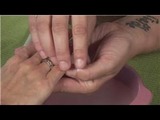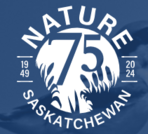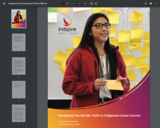
The Saskatchewan Safety Council's short video about the hazards caused by moving machinery parts.
- Subject:
- Agriculture Production
- Agriculture Studies
- Material Type:
- Open Access Asset
- Author:
- Saskatchewan Safety Council
- Date Added:
- 04/11/2024

The Saskatchewan Safety Council's short video about the hazards caused by moving machinery parts.

Do you know how the body responds to physical stressors? There's isn't just one formula for training any part let alone all of your body. Matt breaks down how your body builds muscle and why type of muscle different exercises do. These tips are critical when choosing what types of workout you need to be using.

Take a stroll along the vibrant muraled streetscapes of artful Broadway. Don’t forget to pack a camera! Explore the collections of our world-class public galleries, where local creatives share space with some of the art world’s most recognizable names. Or head to one of our many concert halls, basement bars, and outdoor performance spaces and lose yourself in the rhythm of our local music scene.

Parents: If you have an athlete above the age of 7 in your household, sit them down and make them watch this for 2 minutes and 38 seconds

Greenhouse gases are vital to life on Earth, but the growing concentration of certain gases, such as carbon dioxide, is throwing the planet's delicate balance out of whack. NASA is on the case, studying carbon dioxide on a global scale and its effects on our weather and climate.

Speed, Agility, and Quickness (SAQ) training is is not just for athletes, it can be beneficial for every day clients as well. The key is building a sound foundation first and choosing the right level of exercise.
In this video, Axiom Instructor Joe Drake, explains what SAQ training is and what the difference is between training speed, agility, and quickness. Additionally, you'll learn some sample exercises.

This video explores how solar energy can be used in agriculture production.

Nail art 2024 compilation, ideas for short nails and long nails

Pushing back cuticles must be done in the proper way to avoid any unforeseen problems. Push back cuticles with help from a nail specialist and tanning artist in this free video clip.

Canada is a vast and rugged land. From north to south it spans more than half the Northern Hemisphere.

Tristan Gooley, author of The Natural Navigator book, takes on a short natural navigation challenge in the South Downs. Includes tips on navigating using lichens, grasses, trees, birds and the sun.

Nature Saskatchewan has been dedicated to the conservation of Saskatchewan's natural environment since 1949. We promote appreciation and understanding of our natural world through conservation, education and research. Speaking for the protection and preservation of natural eco-systems and their biodiversity through research and viable conservation practices is our main focus. We strive to connect nature and culture through outreach programs and services. With over 800 members Nature Saskatchewan provides programs and services that provide knowledge and experiences for those who have a love for nature.

Each year, Indspire supports thousands of Indigenous students with reaching their educational
goals. A strong relationship exists between educational attainment and career success.
Therefore, understanding education as an integral part of career transition allows for the
creation of appropriate supports. With these supports, more students can be well prepared to
successfully transition into their careers of choice. Through inspiring Indigenous education and
achievement, Indspire can positively influence these students’ socioeconomic outcomes. To
support them in this journey, Indspire is interested in understanding Indigenous student
experiences in achieving career aspirations and to identify what supports they require for
success in the school-to-work transition. This helps identify areas to strengthen for Indspire’s
Rivers to Success (R2S) Indigenous Mentorship program, as well as for other organizations
looking to provide relevant support for Indigenous career success.
Indspire invests in educational achievement to support the long-term benefit of Indigenous
people, their communities, and Canada. The negative impacts of colonization have a direct
relation to the overrepresentation of Indigenous people experiencing poverty and
unemployment (MacKinnon, 2015). With the growing number of Indigenous students entering
post-secondary education and the workforce, it is a crucial time to ensure there is support for
achieving their full potential (MacKinnon, 2015). Indigenous students will provide an
increasingly significant source of labour that helps enrich Canada and work towards a path to
reconciliation. This is important for closing existing socioeconomic gaps and contributing to a
more equitable society where both Indigenous and non-Indigenous worldviews are valued in
education and the workplace.

Tourism Saskatchewan video highlighting Ness Creek. Although not the direct topic of the video, connections to collaboration with tourism industries in connection to tourism marketing plans are made and connect to TOUE15C in the Saskatchewan Tourism curriculum.

REAL TIME MOISTURE SENSINGNew Holland's moisture sensor measures grain moisture in real time. Samples are taken every 30 seconds and the data is sent to the ...

The exclusive patented, new high flow, high accuracy combine yield sensor developed by New Holland is generally recognised asthe best in class. The senor gen...

Learn about the Nitrogen Cycle in this short and informative video. The video transcript is also included in the description helping it to be more accessible for students.

This Destination Indigenous video is episode 1 in a series that focuses on exploring the heritage and values of First Nation and Inuit culinary practices in Canada.

In this animation, you'll learn about Nutrient Cycling and the interactions that happen between soil microorganisms and plants!
When the Soil Food Web is balanced, plants can harness the power of soil microbes to get all of the nutrients that they need from the soil. During photosynthesis, plants produce simple sugars and carbohydrates. The plants invest some of this sugar and carb energy into the soil by way of their roots to feed bacteria and fungi. These organisms extract nutrients from organic matter and from the soil particles - think grains of sand. However, it’s not until nematodes and protozoa arrive in the root zone to eat the bacteria and fungi that the nutrients are released in a plant-accessible form. The results are well-nourished, resilient plants that continue this nutrient cycle without the need for chemical inputs.

Nutrient Management is managing the use of nutrients to reduce environmental impacts. This video explores how Guy Choiniere in Highgate Center, VT, is using this practice to create a dry manure system to feed the soil on his certified organic farm.
Major benefits of this practice include soil improvement, salinity reduction, improvement of water quality, input cost reduction, and overall plant health increase.